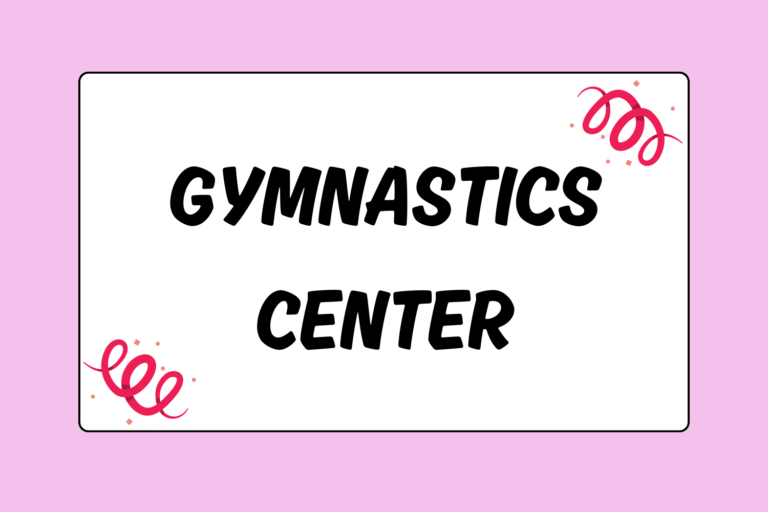Gymnastics competitions are exciting, but they can also be overwhelming. With gymnasts competing on all of the apparatuses simultaneously and scores being raised for each of them, it’s easy to become distracted. This guide breaks down the procedures of a typical competition.
When You Arrive
When you arrive at the venue, you’ll check in at a desk close to the entrance.
Here you’ll receive your number. In order to organize and keep track of all the competitors, each athlete is assigned a number at the competition. Sometimes, the person at the desk will write a number on your hand with a marker. In other instances, you attach a number — written on a piece of paper — to your leotard with a safety pin.
Hot Tip: Have the Digits
If you’re competing under the USA Gymnastics (USAG) Junior Olympic system, you’ll need to be an official member of USAG. Your gym will provide you with the necessary paperwork in the months preceding your first competition.
Warm-ups
Just like at practice, you’ll have time to stretch out and run through your routines.
Open Stretch
When you arrive, you and your team can warm up on the floor exercise for 15-30 minutes. Depending on the size of the competition, the floor can fill up fast with teams. Your coach may also use this time to check equipment settings.
Timed Warm-ups
Timed warm-ups begin at the conclusion of the open stretch. There are three different kinds of timed warm-ups:
Warm up and compete:
In this routine, you receive a set amount of time to practice on the event, and then immediately compete on it. For vault, this means you’ll have two to three practice vaults. On bars and floor exercise, each gymnast is allotted 30 seconds. That sounds brief, but your 30 seconds are combined with your teammates’ time (for example, eight team members with 30 seconds each means four minutes of total warm-up time for the team). On balance beam, you receive 45-90 seconds (depending on your level) on the practice beam.
Traditional:
Some competitions use the traditional format, in which gymnasts warm up on each apparatus before the competition officially begins.
Touch:
After your official balance beam warm-up, regardless of format, you’ll have an extra 30 seconds, or “touch.” That’s just enough time to test your skills on the competition beam before you perform for the judges.
Squads & Rotations
You and your teammates will be placed in a squad, or group, at the beginning of the competition.
Each squad begins on a different apparatus. In women’s competitions, the squads are commonly named A, B, C, and D. Squad A starts on vault, B on bars, C on balance beam, and D on floor exercise. Once your squad finishes an event, you rotate to the next apparatus.
Judges
Now that you’re all warmed up, it’s time to compete in front of the judges.
Depending on your level and the type of competition, there will be one to two judges at each event. The judges evaluate your routine, checking for correct body positions, level and completeness of skills, and artistry. If there are two judges, the average of their scores is your final score.
Hot Tip: Know the Order
If you’re wondering which event you’ll compete in next, familiarize yourself with the Olympic Order, which dictates the flow of the competition. For women, the Olympic Order of the apparatus is vault, uneven bars, balance beam, and floor exercise. If your team begins the competition on vault, you’ll conclude on the floor exercise. If you compete on uneven bars first, you’ll proceed to balance beam, and then the floor exercise, and finish on vault.
Timing
Your routine will be timed during balance beam and floor exercise competitions.
If you’re a compulsory gymnast competing in Levels 1-6, only your beam routine will be timed. The Level 4 beam routine is expected to take 55 seconds, while a Level 6 gymnast has 75 seconds.
If you’re competing under optional-level rules, both your beam and floor routines will be timed. Your routines should range from 70 to 90 seconds.
If you fall, you don’t need to rush back onto the equipment. For uneven bars and balance beam, you can take up to 30 seconds before remounting.
Score Smarts
Here are a few score facts:
- Falls: There is an automatic half-point deduction for falls on or off of the equipment.
- 10.0: The highest possible score in Levels 1-10. Though you may not see too many 10s, a score in the 9.0s means you display high proficiency. A 9.0 is considered a milestone for a gymnast.
- Best of two: On vault, you’ll have the opportunity to perform two vaults. The judges score both of your vaults, with the highest score counting.
- Overtime: You have 10 seconds left to complete your routine if you hear a bell or someone yell “warning.” If you’re still on the beam and hear a bell ring twice or someone yell “time,” that means your time is up, and you will lose one-tenth of a point for going overtime.
- All-around: This score is the combined score from each event. The closer to 40.00, the better.
Also, don’t forget to salute! Failing to salute, or raise your arms, before and after your routine to the judges results in a deduction.
Stuck Landing
Congratulations! You’ve made it through your first competition. Juggling the different types of warm-ups and figuring out what your score means can be a challenge. But the more you compete, the more you’ll become accustomed to meet regulations, and you’ll be able to use this knowledge for the rest of your competitive career. Now it’s time to relax and enjoy the awards ceremony.





